How To Clean Hiv Positive Blood Spill
How to Clean Up Blood Through A 10-Step Procedure
Though there are few certainties in life, most of us can agree to one universal inevitability: accidents happen. Whether it's at home or work, you may need to manage a situation that requires delicate and careful attention–including the cleaning up of chemicals and bodily fluids. One of the most potentially hazardous substances to clean up is blood.
Okay. But why is blood such a biohazard? Blood — human blood, human blood components, and products made of human blood — can expose you to a number of bloodborne pathogens: HIV, Hepatitis B, Hepatitis C, MRSA, and other transmittable diseases.
Wow. So, what do I need to do?
Each situation will be different. The cause and extent of the blood spill may necessitate contacting a biohazard cleanup company like Aftermath. You may use a dinner plate as a point of reference; a crew is usually needed to effectively sanitize and clean blood spills of a diameter greater than a dinner plate. If blood is spilled onto a carpet or other porous material, such as wood, cloth, or certain plastics, it is a misconception that you can genuinely clean the area of contamination. These items should be disposed — and attempting to clean them could compromise the safety of cleaning equipment. Well, I have a small blood spill on a hard surface that I need to clean. How do I manage this myself?
10-Step Procedure to Clean Up Blood
If you're an owner or employee of a business, it's imperative that you follow OSHA regulations with regard to cleaning up biohazardous substances. There are mandated conditions that businesses must meet in order to be compliant with the government, such as employee bloodborne training. You can read more about that in this comprehensive blog post. Before you begin the process of cleaning up the blood, here are some materials you'll need to manage minor spills:
- registered disinfectant product with a broad spectrum kill claim
- personal protective equipment
- biohazard bags
- biohazard labels
- leak-proof sharps containers
- brush and dustpan or tongs/forceps
- disinfectant wipes
Here are ten steps clean up blood on a hard surface:
- Equip . Equip yourself with the protective materials: gloves are essential, and you may want to consider a gown and protective eyewear in case of any splashing. Make sure the protective wear fits snugly and does not have any holes or other concerns of being compromised.
- Remove. Use the brush and dustpan or tongs/forceps to remove broken glass or other pointed shards that could break through your protective wear. Place each piece into a leak-proof sharps container. Under no circumstances should you ever remove these objects by hand.
- Clean Once. Cover the spill in durable cloth towels to soak up as much blood as possible. The registered disinfectant product with a broad spectrum kill claim will not properly disinfect if the surface is still covered in blood. Discard the used towels into a biohazard bag.
- Clean Twice. First, make sure there is proper ventilation if the spill isn't in an open room. Pour most of the registered disinfectant product with a broad spectrum kill claim onto the area of the spill and let it soak for ten minutes. Once this time has elapsed, you should work from the outside toward the center while scrubbing the area with durable cloth towels. Place the towels in the biohazard bag.
- Clean Thrice. Now, dampen some more cloth towels and treat the area of the blood spill once more. Discard these towels in a biohazard bag as well. Allow the area to dry.
- Dispose. Carefully dispose of your personal protective equipment into the plastic bag: gloves, gown, and glasses. This is a smart preventive measure. Be sure that other surfaces are not contaminated during this process. You should seal the bag and place it into a second bag, then seal it and mark it with a biohazard label. Contact your local health department for proper disposal.
- Decontaminate. Use the registered disinfectant product with a broad spectrum kill claim to decontaminate any reusable equipment, such as dustpans, brooms, buckets, tongs, et cetera. After you've allowed the registered disinfectant product with a broad spectrum kill claim to soak for 10 minutes, you should proceed to scrub the equipment and wash it off with fresh water.
- Check. Do a last check of your body for any contamination. Whether blood managed to splash onto your shirt or the back of your elbow, it's important to recognize if you've been exposed. It is strongly recommended that you have a colleague or manager assist you with this step of the procedure.
- Wash Hands. Thoroughly wash your hands and arms with warm water and disinfectant soap. After a vigorous washing, you may even want to consider using disinfectant wipes as a secondary measure.
- Report. Your company may require that you fill out an incident report. Make sure you do this immediately following any cleanup.
You can help ensure the safety of those you work with by implementing and communicating this ten-step procedure for cleaning up blood. If you have a blood spill beyond your capacity to clean or is the result of a crime, it's important that you contact a biohazard cleanup company to conduct a thorough cleansing of the area.
Testimonials
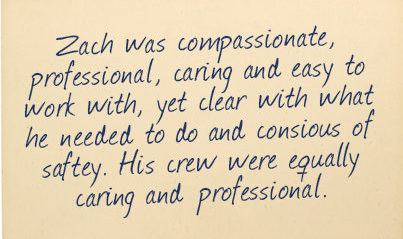
"Zach was compassionate, professional, caring and easy to work with, yet clear with what he needed to do and conscious of safety. His crew were equally caring and professional."
Peggy H. - Chicago, IL
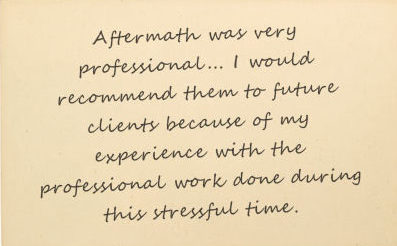
"Aftermath was very professional and completed the work in a timely and efficient manner. I would recommend them to future clients because of my experience with the professional work done during this stressful time. Good job, Jennifer. "
Michael G. - Boulder, CO
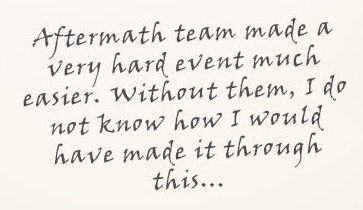
"Aftermath team made a very hard event much easier. Without them, I do not know how I would have made it through this. Corry went above and beyond my expectations. She was much more than the lead and for that I am more than thankful."
Christopher R. - Tallahassee, FL
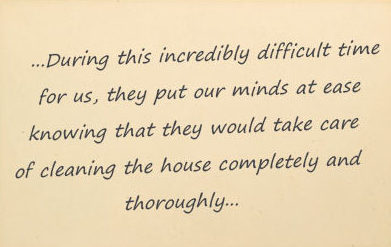
"My father passed away and was left unattended for a few days with His two dogs in the house. We called aftermath on a recommendation from the local police department. John and his team were so helpful, thoughtful and professional throughout this difficult process. They even helped us load my father's Harley into our trailer because we didn't have a ramp. John stood with us while his team worked and let us reminisce about our father with him. The team went through everything in the house and saved everything that they could for us. During this incredibly difficult time for us, they put our minds at ease knowing that they would take care of cleaning the house completely and thoroughly. Thank you from the bottom of our hearts, john and team. "
Jessica S. - Tennessee

"Jason and Ryan went above and beyond any expectations in my time of grief. They are professional, courteous and experts in their field of work. They performed all work quickly and professionally. I would highly recommend this company and these men to anyone. "
Erin R. - Ashville, NC
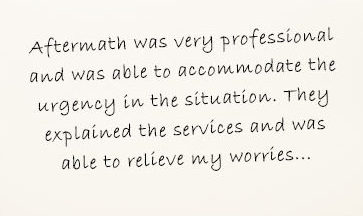
"Aftermath was very professional and was able to accommodate the urgency in the situation. They explained the services and was able to relieve my worries as they dealt with the insurance company. Other companies were unable to take the job or handle the job with efficiency to get the ball moving. Since I was needing the job done in a small window of time."
Latoya G. - Sacramento, CA
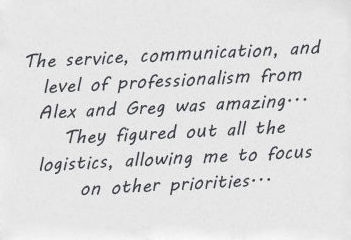
"The service, communication, and level of professionalism from Alex and Greg was amazing. They made an extremely difficult time bearable and easy to navigate. They took on having to figure out all the logistics and allowed me to focus on other priorities without having to worry about what they were doing. "
Zachary F. - East Stroudsburg, PA
How To Clean Hiv Positive Blood Spill
Source: https://www.aftermath.com/content/blood-cleanup-procedures/
Posted by: rodriguezyoughter.blogspot.com

0 Response to "How To Clean Hiv Positive Blood Spill"
Post a Comment